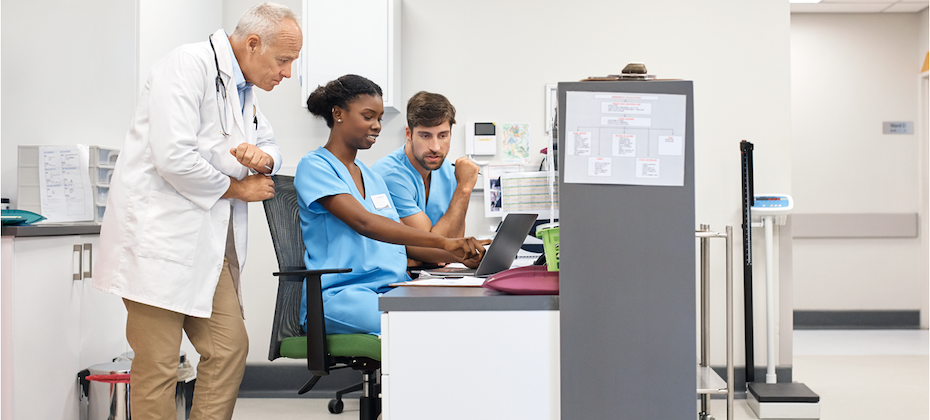
Nearly a quarter of patients have received a surprise medical bill, according to new data from Experian Health and PYMNTS. 4 in 10 patients said they ended up spending more on healthcare than they could afford, with the average surprise bill amounting to $675. Even insurance-savvy patients fall foul of surprise billing: 31% of patients who were familiar with the coverage landscape ended up paying more than their estimates suggested. Healthcare providers will need to implement solutions that can generate accurate price estimates before patients seek care, and prevent surprise billing.
Without accurate cost estimates, patients are more likely to cancel appointments, which could cause their health conditions to get worse and eventually cost more to treat. This also creates avoidable and expensive administrative work for providers, who must chase payments from growing numbers of anxious, self-pay patients.
To prevent surprise billing, healthcare organizations can look to data and digital tools. Advanced analytics provide greater clarity about each patient’s financial situation, generate more accurate estimates and improve the patient payment experience.
Inaccurate estimates persist despite the No Surprises Act
Consumer demand and legislative action on surprise billing have led to an escalation in the push for more accurate estimates.
But estimating patient liability is far from simple. It requires complicated calculations based on the patient’s coverage, provider charges, payer contracts and potential discounts. Undertaking this manually can be time-consuming and error-prone, so many providers are turning to automated solutions.
In a recent conversation with Healthcare Finance News, Jason Considine, Experian Health’s Chief Commercial Officer, notes that providers expect to invest more in digital patient estimates solutions, particularly as the regulations expand. Those investments are likely to include technology to deliver accurate estimates and patient-friendly payment methods, and increased use of advanced data analytics to optimize collections.
Surprise billing is at odds with a high-quality patient payment experience
Beyond compliance, accurate estimates are essential for a positive patient experience. A poor financial experience can leave a bad taste in the patient’s mouth, even if the clinical care was outstanding.
So, what does that positive experience look like? The key is to think like a consumer: make the billing process as clear, convenient and compassionate as possible. Patients are looking for accurate and up-to-date pricing to be available before they receive care. And clear, and communication around the billing process can help eliminate the shock factor and improve patient collections.
For example, providers could integrate a tool such as Patient Estimates, to give patients an accessible, personalized cost breakdown based on real-time pricing and benefit information. Patient Financial Clearance assesses a patient’s individual financial circumstances to provide accurate estimates and recommend appropriate payment plans. And pricing information, payment plans and links to secure payment methods can be offered via a range of self-service, mobile-optimized patient payment solutions.
El Camino Hospital in California used Patient Estimates to improve price transparency. The Senior Director (Revenue Cycle) said:
“We decided to do a soft launch of a patient estimator tool, and the very next day, even without advertising it yet, our patients found the tool on the website and started using it. The feedback was excellent. We’re providing a lot more estimates than we could before because it’s 24/7 and patients can use it on their mobile device, their laptop or their desktop. Some advice I’d give other hospitals is to think of the patient when you’re deciding what to do to best communicate your prices. What would the patient want?”
Data-driven technology can prevent surprise billing
Tom Cox, President at Experian Health, is optimistic about how the patient payment experience might evolve in the second half of 2022, as shared in a recent PYMNTS publication. He believes improvements come down to having the right data in place:
“Payment options are increasingly digital and more convenient, payment plans are more common, and price estimates have become less of a rarity. There is also greater use of non-clinical data to get a broader view of patients and their unique financial solutions. Data, coupled with the right technology, can help providers make sense of it all and enhance the patient journey.”
Data-driven technology can help simplify the payment process for patients, from accurate estimates to convenient payment methods.
With PatientSimple, providers can leverage Experian’s unmatched data and advanced analytics to identify the optimal financial pathway for consumers. It then guides patients toward that pathway through a user-friendly self-service portal. Patient Financial Advisor offers a similar experience via mobile. Patients can avoid the stress of surprise medical billing and plan for upcoming expenses. With tools that allow them to pay medical bills from anywhere, at any time, many patients will pay upfront, speeding up the collections process.
Working with a partner such as Experian Health lets providers combine what they already know about their patients with industry-leading technical expertise and payment tools. With support to implement the right data-driven technology, providers can prevent surprise billing, resulting in regulatory compliance, greater revenue opportunities and customer loyalty.


